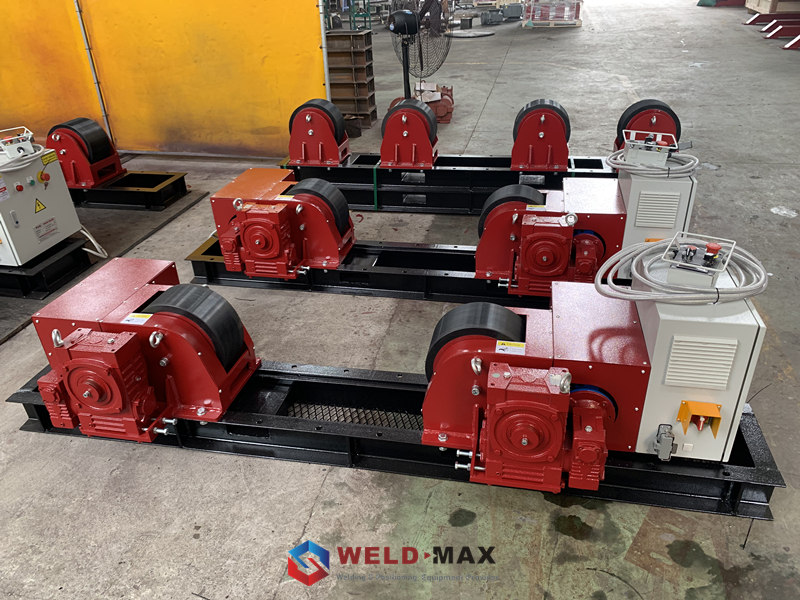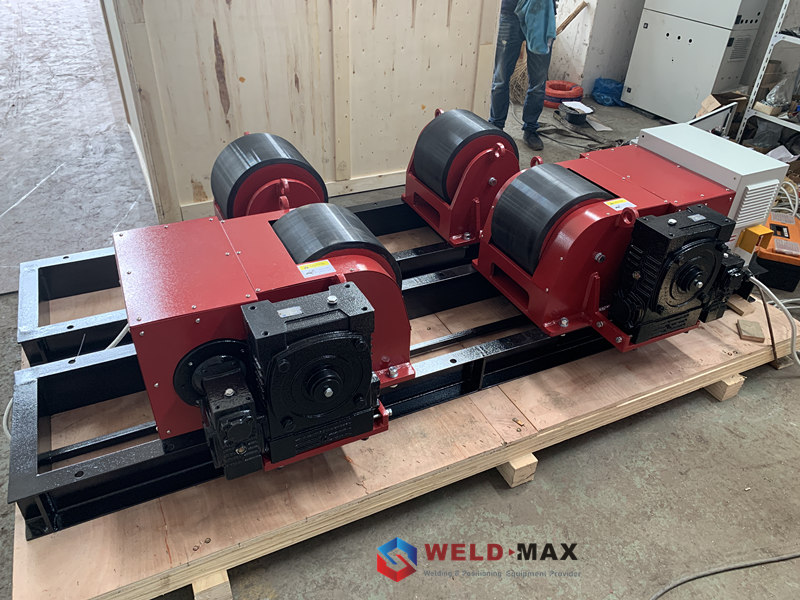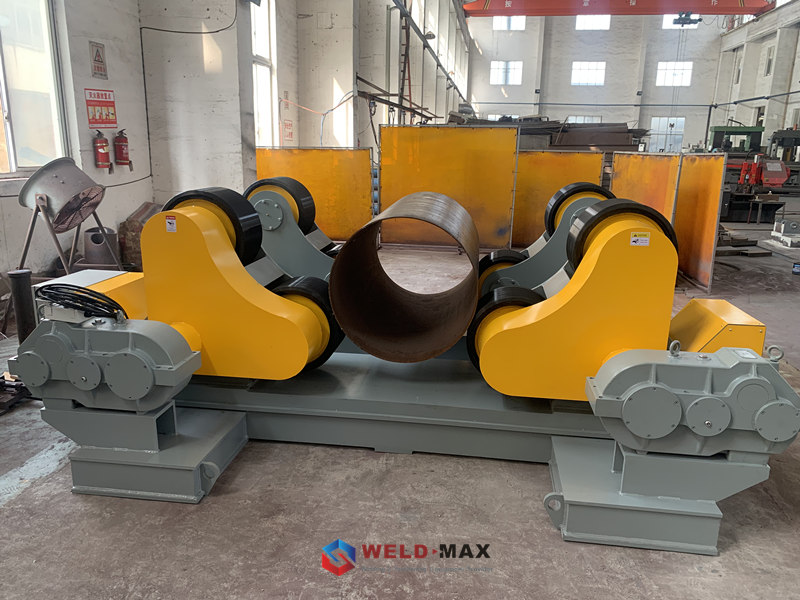Because a welding rotator does not require lifting equipment or cranes, it increases production and reduces idling time. Welding rotators are suitable for light and heavy fabrication shops.
You can achieve exceptionally high quality circumferential joints for shells by using both automatic and manual welding machines.
The petroleum industry also frequently uses API flanges, heat exchangers, boilers, LPG bullet barrels, and pressure vessels besides welding pipes.
It is common for welding fabrication workshops to use welding rotators, or turning rolls, to maintain and rotate heavy cylindrical components at constant and steady rotation speeds so that the welding apparatus does not lose power.
With a traveling carriage mounted welding head, the components can also be rotated at different rates until the desired position is reached, and then locked in place to be longitudinally welded.
Also, turning rolls are used for welding in a vertical plane, and they can be used to coat hollow cylinders with a metal filler with useful properties.
The powered roll or drive unit is a set of two identical rolls, with one turned by a motor and the other idle, and these rolls are usually linked together by a reduction gearbox. The rolls on the frame are adjustable so they can accommodate cylinders of various diameters, and their distances can be adjusted to accommodate varying cylinder sizes.
In order to accept the cylindrical body that must be welded, these frames must be arranged apart on the shop floor.
Rotators are defined primarily by the weights and diameter they can support.
In addition to these characteristics, wheels are also characterized by the materials they are made of, the power type, and the speed they travel at.
To ensure that no protrusions interfere with the motion, it is necessary to ensure that the part can turn freely on the rolls before welding begins.
Additionally, ensure that the weight is distributed longitudinally in order to avoid overloading.
Work pieces need to be carefully watched for structural instabilities that can lead to them falling.
Due to minute positioning errors, workpieces can be translated along their axes.
When turning rolls are out of square and not parallel, they can cause drag forces that cause the workpiece to move unexpectedly.
Welding rollers are available in three types: steel, rubber and polyurethane.
Although welding positioners are simple machines, it is essential that they are maintained in proper working order. Every job and every part of it should be performed with care, following a checklist and learning from the past.
Send your message to us:
Post time: Dec-10-2021


